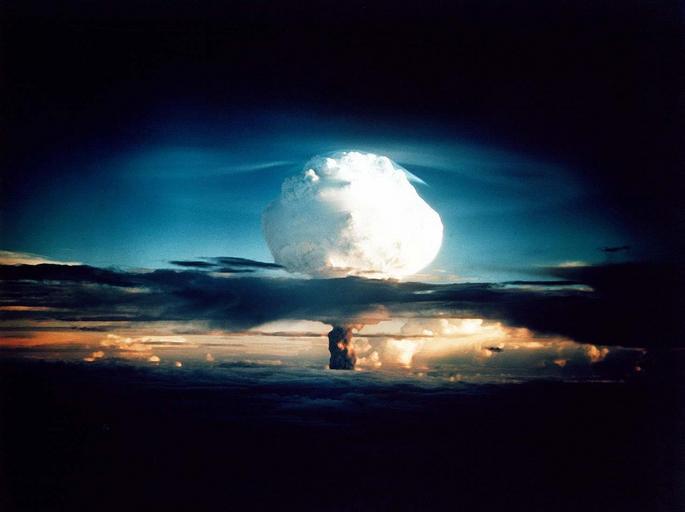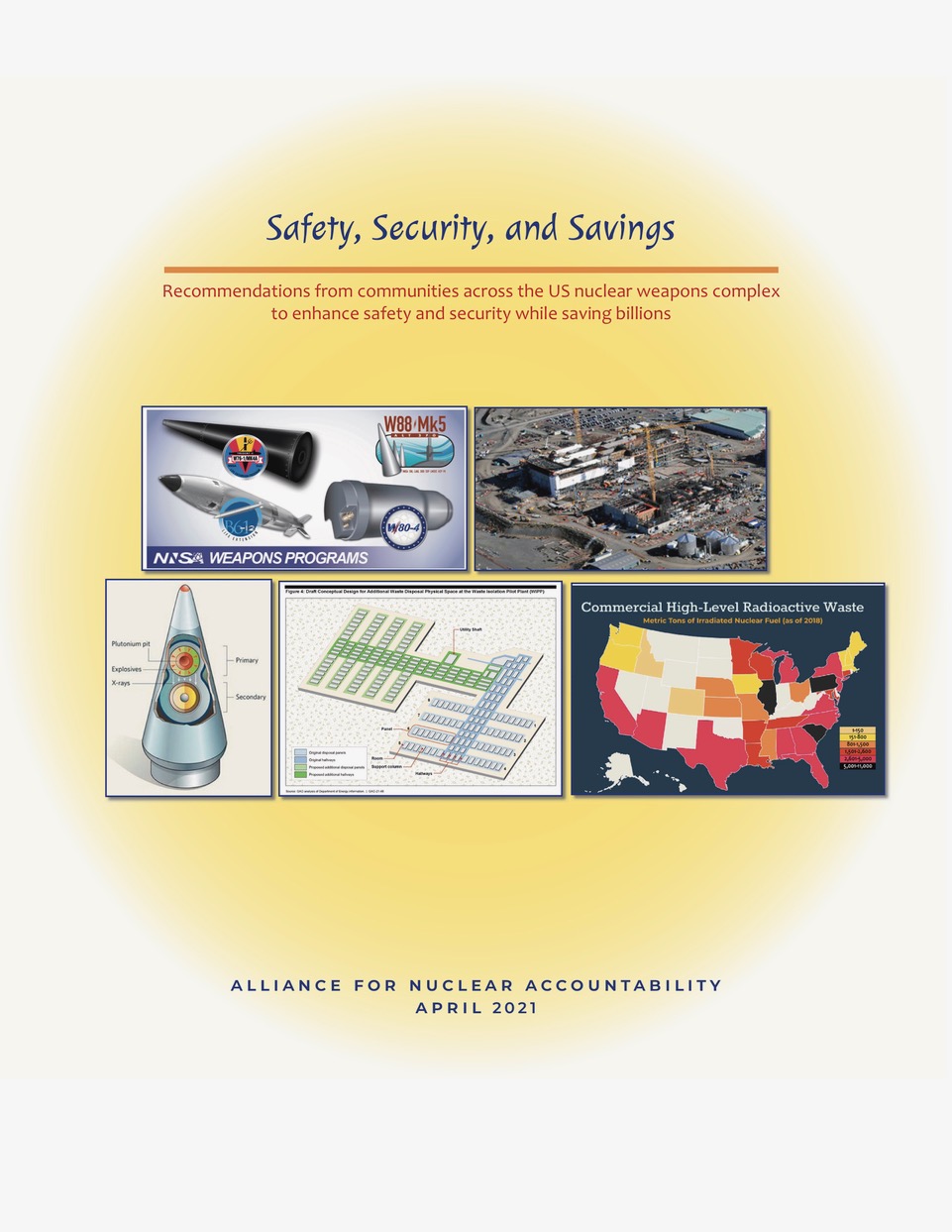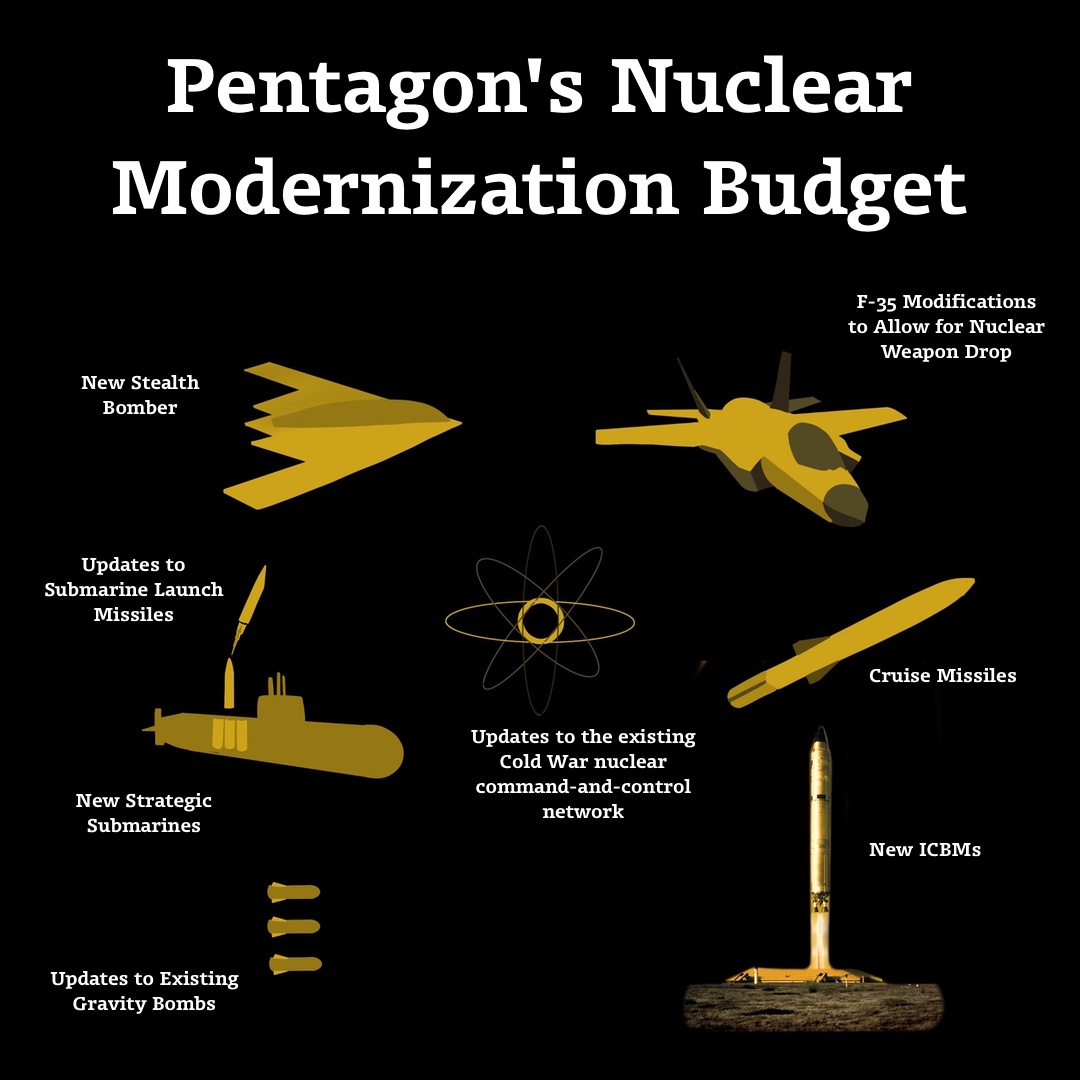RECENT UPDATES
Nuclear Officials Discuss Modernization of Arsenal in Online Forum
“Officials at the National Nuclear Security Administration have said the earlier estimate of Savannah River meeting its pit production target in 2030 was unrealistic and that it could take until 2035.
Meanwhile, the most recent cost estimate for bringing Savannah River’s pit plant online has swelled to $11 billion from $4.6 billion.”
BY: Scott Wyland swyland@sfnewmexican.com Jul 20, 2021
A group of nuclear weapons managers agreed Tuesday that making more plutonium cores for warheads will be key to modernizing the nation’s arsenal as a deterrent against rival countries.
But during an online forum, a few of the managers who work at facilities with nuclear weapons programs also delved into a military leader’s assertion in recent months the U.S. is unable to produce a brand-new nuclear weapon, unlike Russia and China.
Peter Heussy, a defense consultant, asked the panel to interpret the comments by Adm. Charles Richard, head of U.S. Strategic Command, based on their work in the field.
“My thinking is: By policy we’re not supposed to be designing new [weapons]. We’re not being asked to do it, either,” said Mark Martinez, who oversees mission support and testing at the Nevada National Security Site.
The current focus is on life extension, Martinez said, referring to the program to replace or upgrade aging components, including the softball-sized plutonium cores — or pits — that detonate warheads.
Plans call for Los Alamos National Laboratory to produce 30 pits by 2026 and Savannah River Site in South Carolina to make 50 pits in the 2030s.
76 Years After the First Nuclear Bomb Test, the U.S. is Still Dead Set on Building New Weapons of Mass Destruction
Last week, July 16 2021, marked the 76th anniversary of the world’s first nuclear bomb explosion. Within another month, memorials and commemorations will be held for the Japanese cities of Hiroshima and Nagasaki, which the U.S. bombed on 6 and 9 August 1945, respectively. Although it was unknown to most residents of New Mexico until after the United States’ atomic bombing of Japan, the citizens and communities in the southern region of the state were in fact the first nuclear victims.
When the U.S. Army detonated an atomic bomb on July 16, 1945 at 5:29 a.m., “its thunderous roar during the rainy season knocked people from breakfast tables in Tularosa and sent others on the Mescalero Apache reservation into hiding.” (axios.com) Hispanics and Mescalero Apache tribal members in New Mexico are working to pressure lawmakers to compensate those who have suffered extremely because of the experiment. Rare forms of cancer and other health problems have been discovered in those living near the site of the Trinity Test, and the vast, noxious consequences of this experiment have had lasting impact on now multiple, entire generations.
Modernization: The Mainspring of NNSA FY 2022 Budget Request in the Form of Ballooning SRS Pit Costs
The National Nuclear Security Administration’s detailed fiscal year 2022 budget request was (partially) unveiled last week on Friday, May 28, in the evening before a long holiday weekend. The Biden Administration’s total NNSA FY22 budget request is just under $20 billion, requesting of $15.48 billion for NNSA “Total Weapons Activities” and following suit with Trump’s excessive nuclear weapons budget of $15.35 billion that Congress appropriated for FY 2021.
Of particular note in the budget request is that it will cost more than double what the National Nuclear Security Administration had previously estimated for the total of DOE’s Plutonium Bomb Plant construction at Savannah River Site in South Carolina. The facility would be a converted production plant for the fabrication of plutonium “pits,” the triggers for nuclear warheads. The cost for the plant has ballooned from the previous estimate of $4.6 billion to a now staggering $11.1 billion. What’s more, the schedule for the facility’s initial operation has slipped up to five years. The plans for the SRS Plutonium Bomb Plant have already run far over budget and fallen behind schedule, and “these troubling and potentially debilitating developments foreshadow problems to come to the challenging pit-production project,” according to the public interest group Savannah River Site Watch.
MEDIA ADVISORY: WHAT TO LOOK FOR IN THE U.S. DEPARTMENT OF ENERGY’S FY 2022 NUCLEAR WEAPONS AND CLEANUP BUDGET REQUEST
For use with DOE’s scheduled budget release on Friday May 28, 2021
For more information, key contacts are listed below.
The White House is releasing its detailed Fiscal Year 2022 budget on Friday, May 28. A so-called “skinny budget” was released on April 9 that increased Department of Energy (DOE) funding to $46.1 billion, which reportedly includes major new investments in clean energy and climate change abatement. That said, historically roughly 60% of DOE’s funding has been earmarked for nuclear weapons production and cleanup of Cold War wastes and contamination. The pending budget release will finally provide details on those programs.
Because the budget release is so late Congress has already announced that it can’t consider the annual Defense Authorization Act until September. Related appropriations bills will no doubt be delayed too. This means that the government will probably have to run on a Continuing Resolution(s) for much of FY 2022 (which begins October 1, 2021).
The Alliance for Nuclear Accountability strongly opposed the massive 25% FY 2021 increase that the Trump Administration gave to the National Nuclear Security Administration’s (NNSA’s) nuclear weapons programs and proposed cuts to Department of Energy cleanup. In addition, DOE’s nuclear weapons and environmental management programs have been on the Government Accountability Office’s “High Risk List” for project mismanagement and waste of taxpayers’ dollars for 28 consecutive years. Related, the Congressional Budget Office (CBO) has just released a report that projects a 28% increase in costs for so-called “modernization” of U.S. nuclear forces that between the Defense Department and DOE is expected to cost around $1.7 trillion over 30 years.
The Alliance for Nuclear Accountability, a 34-year-old network of groups from communities downwind and downstream of U.S. nuclear weapons sites, will be analyzing the following critical issues. For details, contact the ANA leaders listed at the end of this Advisory.
Virtual Advocacy for “Safety, Security, and Savings” at ANA DC Days:
May 26, 2021
Nuclear Watch New Mexico virtually visited Washington, DC this month to participate in the Alliance for Nuclear Accountability’s “DC Days,” an annual event where organizations from across the nation, whose members are directly affected by nuclear weapons production and the incidental health and environmental consequences, make their voice heard to federal policy makers.
Nuclear Watch NM was focused on opposing new plutonium pit production at Savannah River Site and Los Alamos, pushing for safe and secure toxic cleanup and prioritizing public health while saving billions by terminating ill-conceived new nuclear weapons programs. View more information on these issues in the Alliance for Nuclear Accountability’s new report, “Safety, Security, and Savings,” which describes in detail the foundation of our 2021 advocacy. The report includes a series of fact sheets and recommendations covering new warheads, bomb plants, nuclear waste, cleanup, and more.
The Nuclear Bomb Is Ready: In Italy Soon. The B61-12 has a Nuclear Warhead with 4 “Selectable Power Options”
“It has been officially announced that the new nuclear bomb series production will begin in the fiscal year 2022, beginning October 1, 2021. It is unknown the number of B61-12 bombs that the US will deploy in Italy, Germany, Belgium and Holland to replace the B61s, whose actual number is secret. Satellite photos show renovations that have been carried out at Aviano and Ghedi bases in preparation for the new nuclear bombs’ arrival, the US Air Force F-35A, and Italian Air Force F-35A under US command will be armed with these bombs.”
BY: Manlio Dinucci | globalresearch.ca April 24, 2021
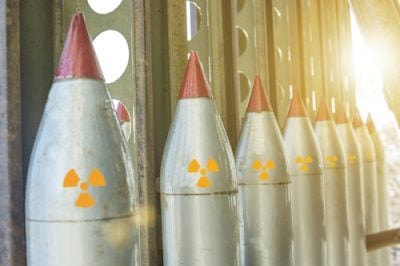
First published on December 3, 2020
***
A video was released on November 23 2020 by Sandia National Laboratories that shows a US F-35A fighter flying at supersonic speed 3000 meters above sea level, launching a B61-12 nuclear bomb (non-nuclear warhead equipped). The bomb did not fall vertically but glided until the tail section rocket ignition gave a rotational motion and the B61-12 (satellite-guided system) headed for the target and hit 42 seconds after launch. The test was carried out on August 25 at the Tonopah shooting range in the Nevada desert.
An official statement confirmed its full success: it was a real nuclear attack, proof that the fighter carried out at supersonic speed and in stealth attitude (with nuclear bombs placed in its internal hold) has the capability to penetrate through enemy defenses.
The B61-12 has a nuclear warhead with four selectable power options at launch depending on the target to hit. It has the ability to penetrate underground, exploding deep to destroy command center bunkers and other underground structures. The Pentagon’s program foresees the construction of about five hundred B61-12 with an estimated cost of roughly 10 billion dollars (so each bomb will cost double what it would cost if it were built entirely of gold).
NNSA Head Props Up Nuclear Weapons Modernization…Again
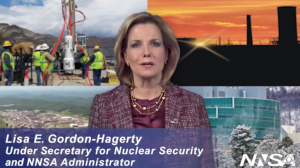 In her September 17, 2020 testimony before before the Senate Armed Services Committee, Lisa E. Gordon-Hagerty, Administrator of the National Nuclear Security Administration, restated the ongoing company line that more money must be spent on the US nuclear weapons stockpile, or the whole enterprise might fall over.
In her September 17, 2020 testimony before before the Senate Armed Services Committee, Lisa E. Gordon-Hagerty, Administrator of the National Nuclear Security Administration, restated the ongoing company line that more money must be spent on the US nuclear weapons stockpile, or the whole enterprise might fall over.
She stated, “The need to now modernize our nuclear weapons stockpile and recapitalize the supporting infrastructure needed to produce and maintain that stockpile has reached a tipping point.”
Don’t Preach Nuclear Arms to Archbishop
“That $2 trillion nuclear weapons modernization will do nothing to protect us against the global pandemic impacting Americans now. Further, the Sandia and Los Alamos labs may actually degrade national security with planned new nuclear weapons designs that can’t be tested because of the global testing moratorium. Or worse yet, this may prompt the U.S. back into testing, throwing more gas on the fire of the new nuclear arms race.”
BY: JAY COGHLAN / NUCLEAR WATCH NEW MEXICO, SANTA FE
Monday, August 24th, 2020 at 12:02am
 In response to (the Aug. 13) editorial “Archbishop’s nuclear weapons view needs a homily on reality,” I was one of the speakers at the 75th anniversary commemoration of the Hiroshima atomic bombing, organized by Fr. John Dear, at which Santa Fe Archbishop John Wester eloquently spoke. The editorial declared “neither Wester nor Dear appear to accept the premise there is any deterrent benefit to the nuclear arsenal.”
In response to (the Aug. 13) editorial “Archbishop’s nuclear weapons view needs a homily on reality,” I was one of the speakers at the 75th anniversary commemoration of the Hiroshima atomic bombing, organized by Fr. John Dear, at which Santa Fe Archbishop John Wester eloquently spoke. The editorial declared “neither Wester nor Dear appear to accept the premise there is any deterrent benefit to the nuclear arsenal.”
To the contrary, the Journal perpetuates the delusion that the U.S. nuclear arsenal is just for deterrence, a premise fed to American taxpayers since the beginning of the Cold War. Instead, the U.S. arsenal has always been about nuclear warfighting, starting with the simple fact that we were the first to use it. This continues to this day, as the Pentagon made clear in a 2013 nuclear policy declaration: “The new guidance requires the United States to maintain significant counterforce capabilities against potential adversaries. The new guidance does not rely on a ‘counter-value’ or ‘minimum deterrence’ strategy.”
ACT NOW TO STOP THE NEW BOMB PLANT!
The National Nuclear Security Administration was told by a federal judge to prepare a new analysis of the risks of an earthquake at the Y-12 site in Oak Ridge, Tennessee, where nuclear weapons parts are made. Instead, NNSA prepared a very narrow analysis of the effects of an earthquake on three buildings at Y-12. They published this Supplement Analysis in April and invited public comment.

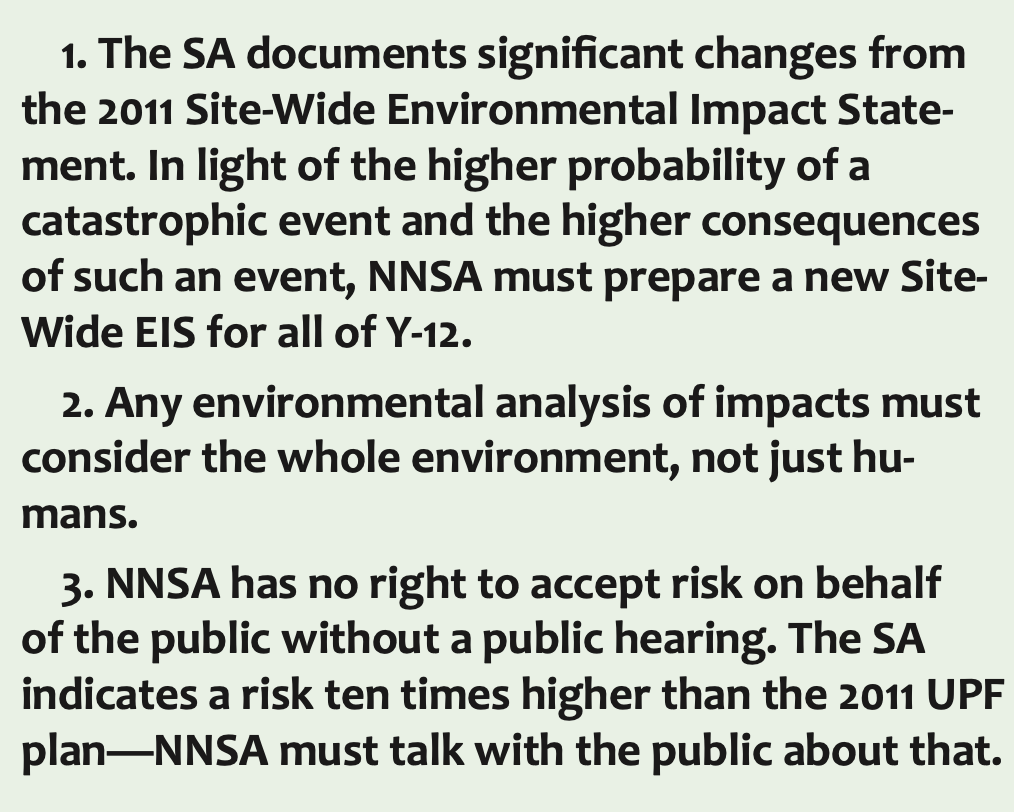
If you want to read the Supplement Analysis, you can find it on OREPA’s website: www.orepa.org. On the right hand column, just under the UPF lawsuit heading.
Your comments should be sent by May 26 to:
Ms. Terri Slack
P.O. Box 2050
Oak Ridge, TN 37831
or by email to: NEPA.Comments@npo.doe.gov
Russia Says Using New U.S. Warheads Would Provoke Nuclear Retaliation
Fires are still blazing near the site of the world’s worst nuclear disaster. Ukraine’s President Volodymyr Zelenskiy has visited firefighters trying to extinguish the flames, marking the 34th anniversary of the accident.
ARTICLE BY: CLYDE HUGHES | upi.com
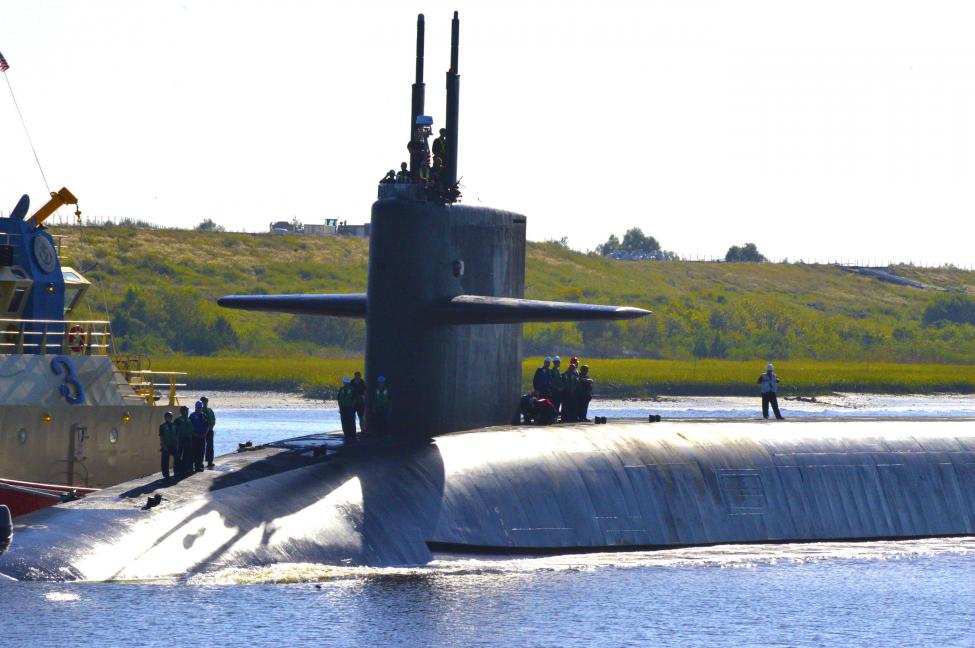
Wednesday, foreign ministry spokeswoman Maria Zakharova cautioned the U.S. military that using those weapons against Russia would warrant a nuclear retaliatory strike.
“Any attack involving a U.S. submarine-launched ballistic missile, regardless of its weapon specifications, would be perceived as a nuclear aggression,” Zakharova said. “Those who like to theorize about the flexibility of American nuclear potential must understand that in line with the Russian military doctrine such actions are seen as warranting retaliatory use of nuclear weapons by Russia.”
The U.S. State Department suggested last week that equipping Navy submarines with the low-yield nukes — which have explosive power similar to the atomic bombs dropped in Japan during World War II — would only serve to deter military provocation from Russia and China.
The Pentagon considers eight projects part of its nuclear modernization budget: new ICBMs, cruise missiles, updates to submarine-launched missiles, a new stealth bomber, new strategic submarines, updates to existing gravity bombs, modifications to the F-35 fighter jet that allow it to drop nuclear weapons, and updates to the existing Cold War nuclear command-and-control network. Since 2013, Congress has approved about $67 billion for those, according to Forecast International, a data analysis firm owned by Defense One’s parent company. In fiscal 2021, the funding totaled $13 billion, or about 1.8 percent of the Pentagon’s $704 billion budget.
A Rough Breakdown of the Trillion Dollar Cost of Modernization:
1/3 NNSA
The National Nuclear Security Administration is a semi-autonomous agency within the Department of Energy
Warhead Production
- Warhead "Life Extension Programs"
- Includes upgrades to B61, W80, W76
- New plutonium pit production
- Includes upgrades to B61, W80, W76
- Nuclear Weapons Labs
- Nuclear Weapons Production Plants
- Other Facilities, infrastructure
2/3 Department of Defense
Warhead Delivery Systems
- Land-Based ICBMs
- 642 (400 to deploy) new ICBMs
- SSBNs: Ballistic Missile Submarines
- 12 new Columbia Class SSBNs
- Bombers & Air-Launched Cruise Missiles
- Upgrades to the B-1, the B-2, and the B-52
- LRSB: 100 new B-21 strategic bombers
- LRSO: 1000+ nuclear-capable cruise missiles
- Upgrades to the B-1, the B-2, and the B-52
Warhead Production and 'Life Extension Programs'
- The W76 was chosen as a SSBN (submarine-launched ICBM) warhead.
- The W80-4 is to be the warhead for the next-gen nuclear cruise missile (LRSO).
- The B61-12 upgrade with new Tail-kit.
- Plutonium pit production.
Note that the NNSA (National Nuclear Security Administration) runs all weapons related activities under the DOE. Environmental cleanup of wastes from nuclear weapons production is under the jurisdiction of the DOE without NNSA involvement. While the NNSA budget is set to increase, DOE's is set to decrease.
Warhead Delivery Systems
- New ICBMs (aka GBSD, or Ground-Based-Strategic-Deterrent): This is a contested element of the planned triad modernization. William Perry and others have argued that land-based ICBMs are the one way a computer glitch could end up triggering total nuclear war, and should therefore be eliminated in favor of bombers and SSBNs. Boeing, Northrup Grumman, and Lockheed have submitted bids for the roughly $70 billion job.
- SSBNs are to be designed and built by Electric Boat in Connecticut. Plans call to build 12, at a cost $5 billion apiece, and no-one knows where those funds will come from. There's been talk of a supplemental Sea-Borne Deterrence Fund; but Air Force wants a similar budgetary trick for its nuclear systems.
- Bombers: Northrup Grumman is prime contractor on the new B-21 as well as the B-2 upgrade. Boeing is contractor for B1 and B52 upgrades.
- Long-Range Stand-Off cruise missiles: This is the other most contested of the new systems planned, with many experts calling it dangerous and unnecessary. Air Force has issued a call for bids for 1000+ missiles. Boeing, Raytheon, Northrop Grumman, and Lockheed Martin are expected to submit bids.
Resources
Nothing Found
It seems we can’t find what you’re looking for. Perhaps searching can help.
Quotes
Nothing Found
It seems we can’t find what you’re looking for. Perhaps searching can help.

